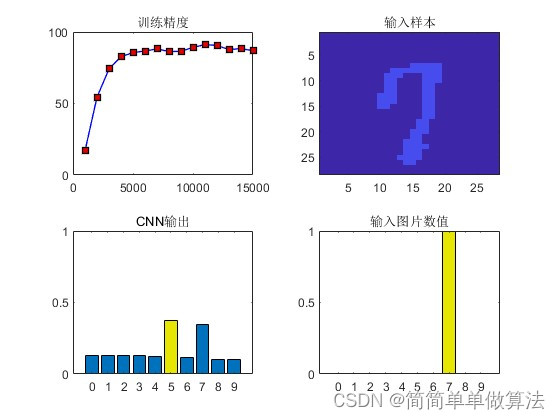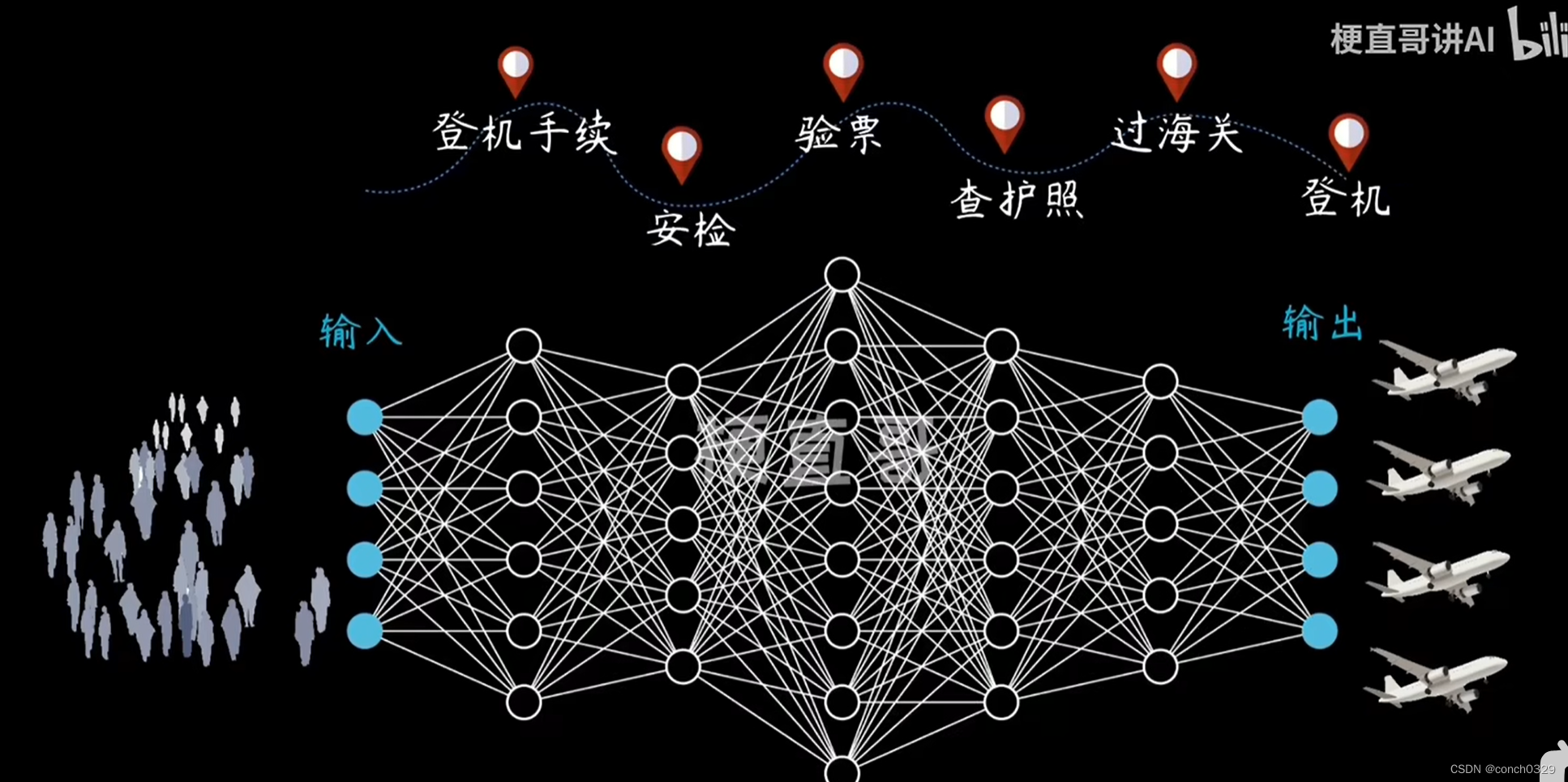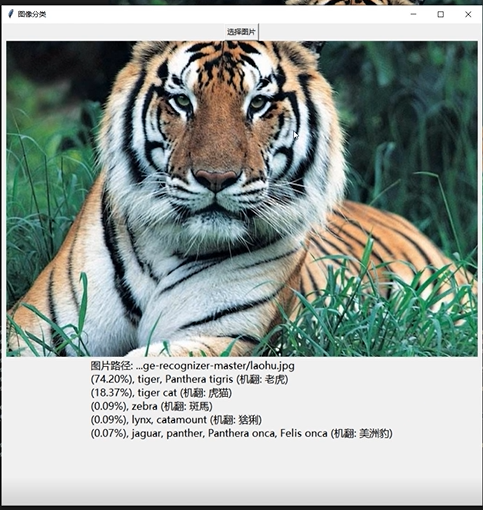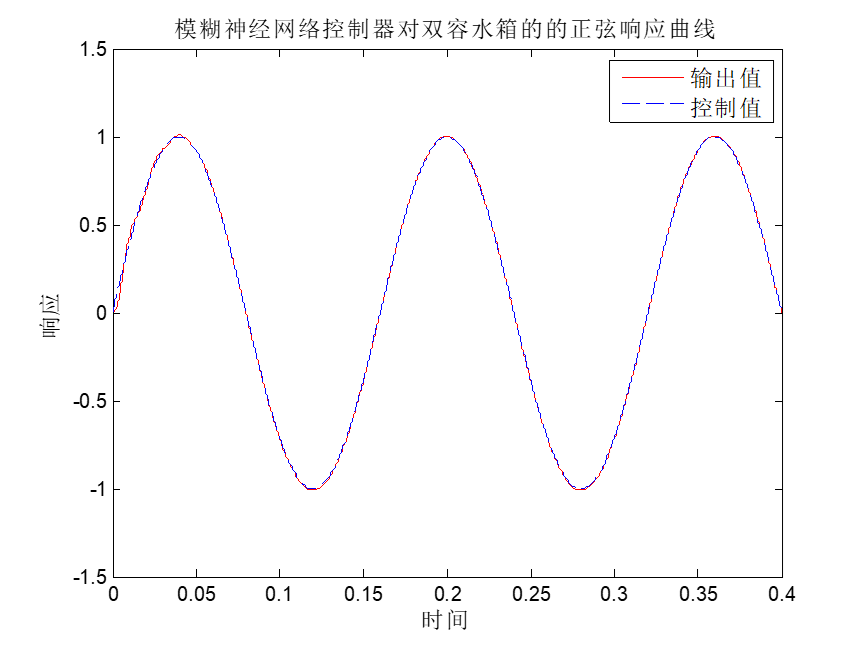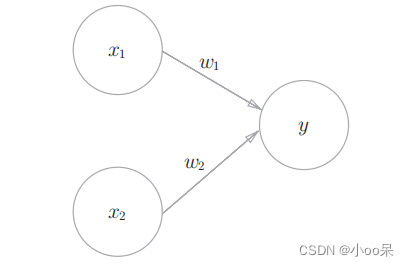本文介绍: 语言环境:Python3.6.5编译器:jupyter notebook深度学习环境:TensorFlow2.4.1卷积神经网络(CNN)实现mnist手写数字识别卷积神经网络(CNN)多种图片分类的实现卷积神经网络(CNN)衣服图像分类的实现卷积神经网络(CNN)鲜花识别卷积神经网络(CNN)天气识别卷积神经网络(VGG-16)识别海贼王草帽一伙卷积神经网络(ResNet-50)鸟类识别卷积神经网络(AlexNet)鸟类识别卷积神经网络(CNN)识别验证码来自专栏:机器学习与深度学习算法推荐。
一、前言
我的环境:
往期精彩内容:
- 卷积神经网络(CNN)实现mnist手写数字识别
- 卷积神经网络(CNN)多种图片分类的实现
- 卷积神经网络(CNN)衣服图像分类的实现
- 卷积神经网络(CNN)鲜花识别
- 卷积神经网络(CNN)天气识别
- 卷积神经网络(VGG-16)识别海贼王草帽一伙
- 卷积神经网络(ResNet-50)鸟类识别
- 卷积神经网络(AlexNet)鸟类识别
- 卷积神经网络(CNN)识别验证码
二、前期工作
1. 设置GPU(如果使用的是CPU可以忽略这步)
import tensorflow as tf
gpus = tf.config.list_physical_devices("GPU")
if gpus:
tf.config.experimental.set_memory_growth(gpus[0], True) #设置GPU显存用量按需使用
tf.config.set_visible_devices([gpus[0]],"GPU")
2. 导入数据
import matplotlib.pyplot as plt
# 支持中文
plt.rcParams['font.sans-serif'] = ['SimHei'] # 用来正常显示中文标签
plt.rcParams['axes.unicode_minus'] = False # 用来正常显示负号
import os,PIL,pathlib
# 设置随机种子尽可能使结果可以重现
import numpy as np
np.random.seed(1)
# 设置随机种子尽可能使结果可以重现
import tensorflow as tf
tf.random.set_seed(1)
from tensorflow import keras
from tensorflow.keras import layers,models
data_dir = "code"
data_dir = pathlib.Path(data_dir)
all_image_paths = list(data_dir.glob('*'))
all_image_paths = [str(path) for path in all_image_paths]
# 打乱数据
random.shuffle(all_image_paths)
# 获取数据标签
all_label_names = [path.split("\")[5].split(".")[0] for path in all_image_paths]
image_count = len(all_image_paths)
print("图片总数为:",image_count)
data_dir = "gestures"
data_dir = pathlib.Path(data_dir)
3. 查看数据
image_count = len(list(data_dir.glob('*/*')))
print("图片总数为:",image_count)
图片总数为: 12547
二、数据预处理
本文主要是识别24个英文字母的手语姿势(另外两个字母的手语是动作),其中每一个手语姿势图片均有500+张。
1. 加载数据
使用image_dataset_from_directory方法将磁盘中的数据加载到tf.data.Dataset中
batch_size = 8
img_height = 224
img_width = 224
TensorFlow版本是2.2.0的同学可能会遇到module 'tensorflow.keras.preprocessing' has no attribute 'image_dataset_from_directory'的报错,升级一下TensorFlow就OK了。
train_ds = tf.keras.preprocessing.image_dataset_from_directory(
data_dir,
validation_split=0.2,
subset="training",
seed=123,
image_size=(img_height, img_width),
batch_size=batch_size)
Found 12547 files belonging to 24 classes.
Using 10038 files for training.
val_ds = tf.keras.preprocessing.image_dataset_from_directory(
data_dir,
validation_split=0.2,
subset="validation",
seed=123,
image_size=(img_height, img_width),
batch_size=batch_size)
class_names = train_ds.class_names
print(class_names)
['a', 'b', 'c', 'd', 'e', 'f', 'g', 'h', 'i', 'k', 'l', 'm', 'n', 'o', 'p', 'q', 'r', 's', 't', 'u', 'v', 'w', 'x', 'y']
2. 可视化数据
plt.figure(figsize=(10, 5)) # 图形的宽为10高为5
for images, labels in train_ds.take(1):
for i in range(8):
ax = plt.subplot(2, 4, i + 1)
plt.imshow(images[i].numpy().astype("uint8"))
plt.title(class_names[labels[i]])
plt.axis("off")

plt.imshow(images[1].numpy().astype("uint8"))
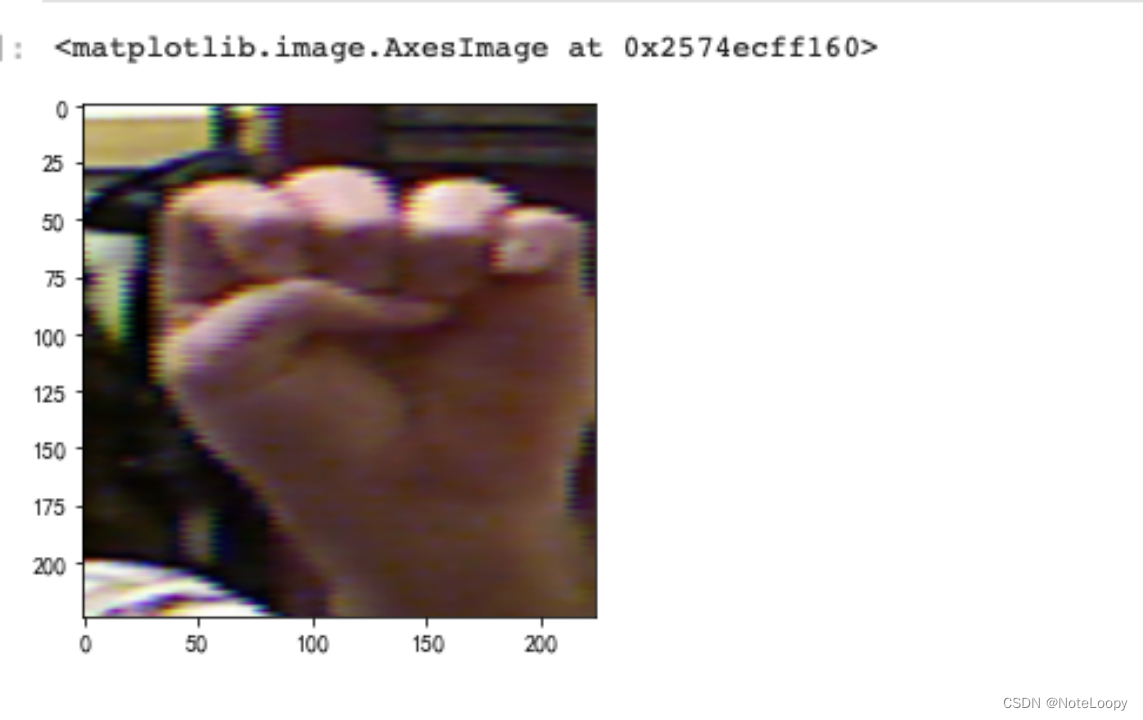
3. 再次检查数据
for image_batch, labels_batch in train_ds:
print(image_batch.shape)
print(labels_batch.shape)
break
(8, 224, 224, 3)
(8,)
Image_batch是形状的张量(8, 224, 224, 3)。这是一批形状240x240x3的8张图片(最后一维指的是彩色通道RGB)。Label_batch是形状(8,)的张量,这些标签对应8张图片
4. 配置数据集
AUTOTUNE = tf.data.AUTOTUNE
train_ds = train_ds.cache().shuffle(1000).prefetch(buffer_size=AUTOTUNE)
val_ds = val_ds.cache().prefetch(buffer_size=AUTOTUNE)
三、构建Inception V3网络模型
1.自己搭建
下面是本文的重点 Inception V3 网络模型的构建,可以试着按照上面的图自己构建一下 Inception V3,这部分我主要是参考官网的构建过程,将其单独拎了出来。
#=============================================================
# Inception V3 网络
#=============================================================
from tensorflow.keras.models import Model
from tensorflow.keras import layers
from tensorflow.keras.layers import Activation,Dense,Input,BatchNormalization,Conv2D,AveragePooling2D
from tensorflow.keras.layers import GlobalAveragePooling2D,MaxPooling2D
def conv2d_bn(x,filters,num_row,num_col,padding='same',strides=(1, 1),name=None):
if name is not None:
bn_name = name + '_bn'
conv_name = name + '_conv'
else:
bn_name = None
conv_name = None
x = Conv2D(filters,(num_row, num_col),strides=strides,padding=padding,use_bias=False,name=conv_name)(x)
x = BatchNormalization(scale=False, name=bn_name)(x)
x = Activation('relu', name=name)(x)
return x
def InceptionV3(input_shape=[224,224,3],classes=1000):
img_input = Input(shape=input_shape)
x = conv2d_bn(img_input, 32, 3, 3, strides=(2, 2), padding='valid')
x = conv2d_bn(x, 32, 3, 3, padding='valid')
x = conv2d_bn(x, 64, 3, 3)
x = MaxPooling2D((3, 3), strides=(2, 2))(x)
x = conv2d_bn(x, 80, 1, 1, padding='valid')
x = conv2d_bn(x, 192, 3, 3, padding='valid')
x = MaxPooling2D((3, 3), strides=(2, 2))(x)
#================================#
# Block1 35x35
#================================#
# Block1 part1
# 35 x 35 x 192 -> 35 x 35 x 256
branch1x1 = conv2d_bn(x, 64, 1, 1)
branch5x5 = conv2d_bn(x, 48, 1, 1)
branch5x5 = conv2d_bn(branch5x5, 64, 5, 5)
branch3x3dbl = conv2d_bn(x, 64, 1, 1)
branch3x3dbl = conv2d_bn(branch3x3dbl, 96, 3, 3)
branch3x3dbl = conv2d_bn(branch3x3dbl, 96, 3, 3)
branch_pool = AveragePooling2D((3, 3), strides=(1, 1), padding='same')(x)
branch_pool = conv2d_bn(branch_pool, 32, 1, 1)
x = layers.concatenate([branch1x1, branch5x5, branch3x3dbl, branch_pool],axis=3,name='mixed0')
# Block1 part2
# 35 x 35 x 256 -> 35 x 35 x 288
branch1x1 = conv2d_bn(x, 64, 1, 1)
branch5x5 = conv2d_bn(x, 48, 1, 1)
branch5x5 = conv2d_bn(branch5x5, 64, 5, 5)
branch3x3dbl = conv2d_bn(x, 64, 1, 1)
branch3x3dbl = conv2d_bn(branch3x3dbl, 96, 3, 3)
branch3x3dbl = conv2d_bn(branch3x3dbl, 96, 3, 3)
branch_pool = AveragePooling2D((3, 3), strides=(1, 1), padding='same')(x)
branch_pool = conv2d_bn(branch_pool, 64, 1, 1)
x = layers.concatenate([branch1x1, branch5x5, branch3x3dbl, branch_pool],axis=3,name='mixed1')
# Block1 part3
# 35 x 35 x 288 -> 35 x 35 x 288
branch1x1 = conv2d_bn(x, 64, 1, 1)
branch5x5 = conv2d_bn(x, 48, 1, 1)
branch5x5 = conv2d_bn(branch5x5, 64, 5, 5)
branch3x3dbl = conv2d_bn(x, 64, 1, 1)
branch3x3dbl = conv2d_bn(branch3x3dbl, 96, 3, 3)
branch3x3dbl = conv2d_bn(branch3x3dbl, 96, 3, 3)
branch_pool = AveragePooling2D((3, 3), strides=(1, 1), padding='same')(x)
branch_pool = conv2d_bn(branch_pool, 64, 1, 1)
x = layers.concatenate([branch1x1, branch5x5, branch3x3dbl, branch_pool],axis=3,name='mixed2')
#================================#
# Block2 17x17
#================================#
# Block2 part1
# 35 x 35 x 288 -> 17 x 17 x 768
branch3x3 = conv2d_bn(x, 384, 3, 3, strides=(2, 2), padding='valid')
branch3x3dbl = conv2d_bn(x, 64, 1, 1)
branch3x3dbl = conv2d_bn(branch3x3dbl, 96, 3, 3)
branch3x3dbl = conv2d_bn(branch3x3dbl, 96, 3, 3, strides=(2, 2), padding='valid')
branch_pool = MaxPooling2D((3, 3), strides=(2, 2))(x)
x = layers.concatenate([branch3x3, branch3x3dbl, branch_pool], axis=3, name='mixed3')
# Block2 part2
# 17 x 17 x 768 -> 17 x 17 x 768
branch1x1 = conv2d_bn(x, 192, 1, 1)
branch7x7 = conv2d_bn(x, 128, 1, 1)
branch7x7 = conv2d_bn(branch7x7, 128, 1, 7)
branch7x7 = conv2d_bn(branch7x7, 192, 7, 1)
branch7x7dbl = conv2d_bn(x, 128, 1, 1)
branch7x7dbl = conv2d_bn(branch7x7dbl, 128, 7, 1)
branch7x7dbl = conv2d_bn(branch7x7dbl, 128, 1, 7)
branch7x7dbl = conv2d_bn(branch7x7dbl, 128, 7, 1)
branch7x7dbl = conv2d_bn(branch7x7dbl, 192, 1, 7)
branch_pool = AveragePooling2D((3, 3), strides=(1, 1), padding='same')(x)
branch_pool = conv2d_bn(branch_pool, 192, 1, 1)
x = layers.concatenate([branch1x1, branch7x7, branch7x7dbl, branch_pool],axis=3,name='mixed4')
# Block2 part3 and part4
# 17 x 17 x 768 -> 17 x 17 x 768 -> 17 x 17 x 768
for i in range(2):
branch1x1 = conv2d_bn(x, 192, 1, 1)
branch7x7 = conv2d_bn(x, 160, 1, 1)
branch7x7 = conv2d_bn(branch7x7, 160, 1, 7)
branch7x7 = conv2d_bn(branch7x7, 192, 7, 1)
branch7x7dbl = conv2d_bn(x, 160, 1, 1)
branch7x7dbl = conv2d_bn(branch7x7dbl, 160, 7, 1)
branch7x7dbl = conv2d_bn(branch7x7dbl, 160, 1, 7)
branch7x7dbl = conv2d_bn(branch7x7dbl, 160, 7, 1)
branch7x7dbl = conv2d_bn(branch7x7dbl, 192, 1, 7)
branch_pool = AveragePooling2D(
(3, 3), strides=(1, 1), padding='same')(x)
branch_pool = conv2d_bn(branch_pool, 192, 1, 1)
x = layers.concatenate([branch1x1, branch7x7, branch7x7dbl, branch_pool],axis=3,name='mixed' + str(5 + i))
# Block2 part5
# 17 x 17 x 768 -> 17 x 17 x 768
branch1x1 = conv2d_bn(x, 192, 1, 1)
branch7x7 = conv2d_bn(x, 192, 1, 1)
branch7x7 = conv2d_bn(branch7x7, 192, 1, 7)
branch7x7 = conv2d_bn(branch7x7, 192, 7, 1)
branch7x7dbl = conv2d_bn(x, 192, 1, 1)
branch7x7dbl = conv2d_bn(branch7x7dbl, 192, 7, 1)
branch7x7dbl = conv2d_bn(branch7x7dbl, 192, 1, 7)
branch7x7dbl = conv2d_bn(branch7x7dbl, 192, 7, 1)
branch7x7dbl = conv2d_bn(branch7x7dbl, 192, 1, 7)
branch_pool = AveragePooling2D((3, 3), strides=(1, 1), padding='same')(x)
branch_pool = conv2d_bn(branch_pool, 192, 1, 1)
x = layers.concatenate([branch1x1, branch7x7, branch7x7dbl, branch_pool],axis=3,name='mixed7')
#================================#
# Block3 8x8
#================================#
# Block3 part1
# 17 x 17 x 768 -> 8 x 8 x 1280
branch3x3 = conv2d_bn(x, 192, 1, 1)
branch3x3 = conv2d_bn(branch3x3, 320, 3, 3,strides=(2, 2), padding='valid')
branch7x7x3 = conv2d_bn(x, 192, 1, 1)
branch7x7x3 = conv2d_bn(branch7x7x3, 192, 1, 7)
branch7x7x3 = conv2d_bn(branch7x7x3, 192, 7, 1)
branch7x7x3 = conv2d_bn(branch7x7x3, 192, 3, 3, strides=(2, 2), padding='valid')
branch_pool = MaxPooling2D((3, 3), strides=(2, 2))(x)
x = layers.concatenate([branch3x3, branch7x7x3, branch_pool], axis=3, name='mixed8')
# Block3 part2 part3
# 8 x 8 x 1280 -> 8 x 8 x 2048 -> 8 x 8 x 2048
for i in range(2):
branch1x1 = conv2d_bn(x, 320, 1, 1)
branch3x3 = conv2d_bn(x, 384, 1, 1)
branch3x3_1 = conv2d_bn(branch3x3, 384, 1, 3)
branch3x3_2 = conv2d_bn(branch3x3, 384, 3, 1)
branch3x3 = layers.concatenate(
[branch3x3_1, branch3x3_2], axis=3, name='mixed9_' + str(i))
branch3x3dbl = conv2d_bn(x, 448, 1, 1)
branch3x3dbl = conv2d_bn(branch3x3dbl, 384, 3, 3)
branch3x3dbl_1 = conv2d_bn(branch3x3dbl, 384, 1, 3)
branch3x3dbl_2 = conv2d_bn(branch3x3dbl, 384, 3, 1)
branch3x3dbl = layers.concatenate([branch3x3dbl_1, branch3x3dbl_2], axis=3)
branch_pool = AveragePooling2D((3, 3), strides=(1, 1), padding='same')(x)
branch_pool = conv2d_bn(branch_pool, 192, 1, 1)
x = layers.concatenate([branch1x1, branch3x3, branch3x3dbl, branch_pool],axis=3,name='mixed' + str(9 + i))
# 平均池化后全连接。
x = GlobalAveragePooling2D(name='avg_pool')(x)
x = Dense(classes, activation='softmax', name='predictions')(x)
inputs = img_input
model = Model(inputs, x, name='inception_v3')
return model
model = InceptionV3()
model.summary()
2.官方模型
# import tensorflow as tf
# model_2 = tf.keras.applications.InceptionV3()
# model_2.summary()
五、编译
在准备对模型进行训练之前,还需要再对其进行一些设置。以下内容是在模型的编译步骤中添加的:
- 损失函数(loss):用于衡量模型在训练期间的准确率。
- 优化器(optimizer):决定模型如何根据其看到的数据和自身的损失函数进行更新。
- 指标(metrics):用于监控训练和测试步骤。以下示例使用了准确率,即被正确分类的图像的比率。
# 设置优化器,我这里改变了学习率。
opt = tf.keras.optimizers.Adam(learning_rate=1e-5)
model.compile(optimizer=opt,
loss='sparse_categorical_crossentropy',
metrics=['accuracy'])
六、训练模型
epochs = 10
history = model.fit(
train_ds,
validation_data=val_ds,
epochs=epochs
)
Epoch 1/10
1255/1255 [==============================] - 146s 77ms/step - loss: 3.9494 - accuracy: 0.3102 - val_loss: 0.6095 - val_accuracy: 0.8481
Epoch 2/10
1255/1255 [==============================] - 70s 56ms/step - loss: 0.7071 - accuracy: 0.8370 - val_loss: 0.1968 - val_accuracy: 0.9430
Epoch 3/10
1255/1255 [==============================] - 70s 56ms/step - loss: 0.2956 - accuracy: 0.9380 - val_loss: 0.0834 - val_accuracy: 0.9757
Epoch 4/10
1255/1255 [==============================] - 70s 56ms/step - loss: 0.1344 - accuracy: 0.9766 - val_loss: 0.0452 - val_accuracy: 0.9884
Epoch 5/10
1255/1255 [==============================] - 71s 57ms/step - loss: 0.0566 - accuracy: 0.9954 - val_loss: 0.0265 - val_accuracy: 0.9916
Epoch 6/10
1255/1255 [==============================] - 72s 57ms/step - loss: 0.0282 - accuracy: 0.9988 - val_loss: 0.0158 - val_accuracy: 0.9956
Epoch 7/10
1255/1255 [==============================] - 72s 57ms/step - loss: 0.0150 - accuracy: 0.9994 - val_loss: 0.0218 - val_accuracy: 0.9924
Epoch 8/10
1255/1255 [==============================] - 72s 57ms/step - loss: 0.0188 - accuracy: 0.9979 - val_loss: 0.0125 - val_accuracy: 0.9968
Epoch 9/10
1255/1255 [==============================] - 71s 57ms/step - loss: 0.0122 - accuracy: 0.9986 - val_loss: 0.0542 - val_accuracy: 0.9833
Epoch 10/10
1255/1255 [==============================] - 70s 56ms/step - loss: 0.0178 - accuracy: 0.9964 - val_loss: 0.0213 - val_accuracy: 0.9924
七、模型评估
acc = history.history['accuracy']
val_acc = history.history['val_accuracy']
loss = history.history['loss']
val_loss = history.history['val_loss']
epochs_range = range(epochs)
plt.figure(figsize=(12, 4))
plt.subplot(1, 2, 1)
plt.suptitle("微信公众号(K同学啊)中回复(DL+13)可获取数据")
plt.plot(epochs_range, acc, label='Training Accuracy')
plt.plot(epochs_range, val_acc, label='Validation Accuracy')
plt.legend(loc='lower right')
plt.title('Training and Validation Accuracy')
plt.subplot(1, 2, 2)
plt.plot(epochs_range, loss, label='Training Loss')
plt.plot(epochs_range, val_loss, label='Validation Loss')
plt.legend(loc='upper right')
plt.title('Training and Validation Loss')
plt.show()
二、构建一个tf.data.Dataset
1.预处理函数
acc = history.history['accuracy']
val_acc = history.history['val_accuracy']
loss = history.history['loss']
val_loss = history.history['val_loss']
epochs_range = range(epochs)
plt.figure(figsize=(12, 4))
plt.subplot(1, 2, 1)
plt.plot(epochs_range, acc, label='Training Accuracy')
plt.plot(epochs_range, val_acc, label='Validation Accuracy')
plt.legend(loc='lower right')
plt.title('Training and Validation Accuracy')
plt.subplot(1, 2, 2)
plt.plot(epochs_range, loss, label='Training Loss')
plt.plot(epochs_range, val_loss, label='Validation Loss')
plt.legend(loc='upper right')
plt.title('Training and Validation Loss')
plt.show()
七、保存和加载模型
# 保存模型
model.save('model/12_model.h5')
# 加载模型
new_model = tf.keras.models.load_model('model/12_model.h5')
八、预测
# 采用加载的模型(new_model)来看预测结果
plt.figure(figsize=(10, 5)) # 图形的宽为10高为5
for images, labels in val_ds.take(1):
for i in range(8):
ax = plt.subplot(2, 4, i + 1)
# 显示图片
plt.imshow(images[i].numpy().astype("uint8"))
# 需要给图片增加一个维度
img_array = tf.expand_dims(images[i], 0)
# 使用模型预测图片中的人物
predictions = new_model.predict(img_array)
plt.title(class_names[np.argmax(predictions)])
plt.axis("off")
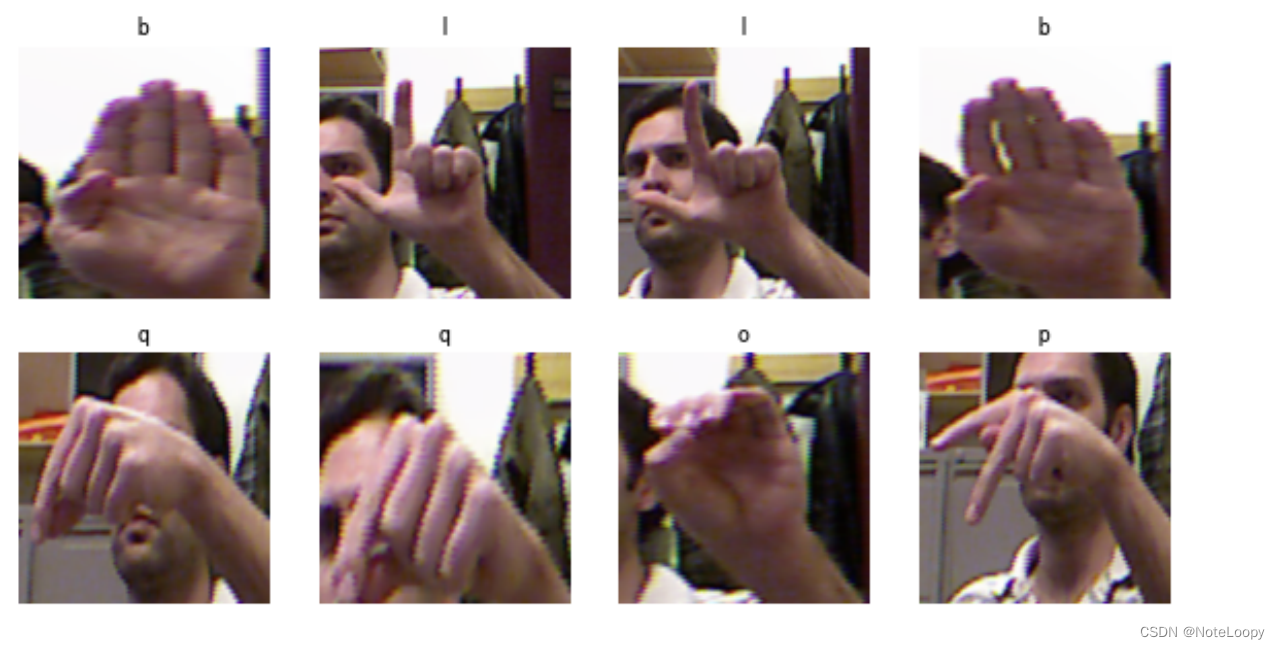
原文地址:https://blog.csdn.net/weixin_45822638/article/details/134608419
本文来自互联网用户投稿,该文观点仅代表作者本人,不代表本站立场。本站仅提供信息存储空间服务,不拥有所有权,不承担相关法律责任。
如若转载,请注明出处:http://www.7code.cn/show_3122.html
如若内容造成侵权/违法违规/事实不符,请联系代码007邮箱:suwngjj01@126.com进行投诉反馈,一经查实,立即删除!
声明:本站所有文章,如无特殊说明或标注,均为本站原创发布。任何个人或组织,在未征得本站同意时,禁止复制、盗用、采集、发布本站内容到任何网站、书籍等各类媒体平台。如若本站内容侵犯了原著者的合法权益,可联系我们进行处理。

